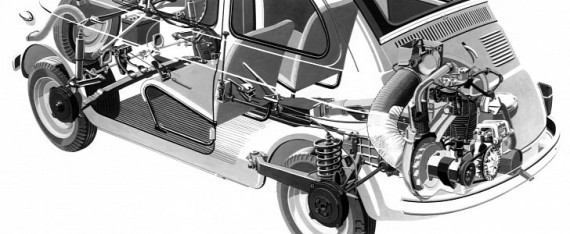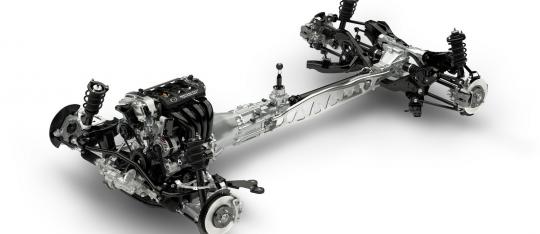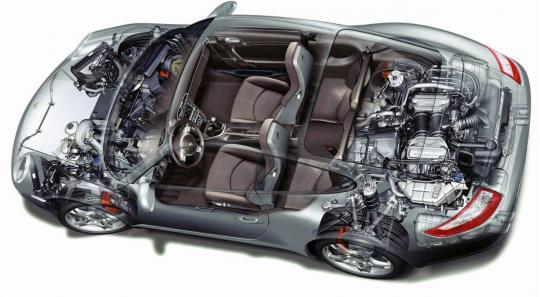 After yesterday’s cover story about engine design configurations that will probably never return to production, we decided to go over all of the setups that have been used by automakers over the years.
After yesterday’s cover story about engine design configurations that will probably never return to production, we decided to go over all of the setups that have been used by automakers over the years.
A few of them can be found in today’s cars, while others have not been employed for many years. As usual with engineering, some solutions were not future-proof, and reasons for this can range from cost-effectiveness to complexity.
In many branches of industry, the simplest way is usually the best. For the car industry, things are a bit more complicated, as technologies continually evolve, while trends come and go. Below you will find a list of all the engine layouts that were implemented by automakers. We split them into three essential groups, and we explore each with its derivatives.Front engine configuration
 The simplest and most common form of automobile these days involves placing the engine in the front and having it power the front wheels. The arrangement is called FF, which stands for Front-engine with front-wheel-drive. In spite of its simplicity, this has not been the first kind of design that was employed for automobiles.
The simplest and most common form of automobile these days involves placing the engine in the front and having it power the front wheels. The arrangement is called FF, which stands for Front-engine with front-wheel-drive. In spite of its simplicity, this has not been the first kind of design that was employed for automobiles.
Cars with FF layout offer more interior space than other configurations, along with a predictable handling model. However, the situation is not ideal because of weight distribution, but it makes up for that with smart suspension design and an affordable price. The cheapest new cars available on the market today come with this configuration, but this has not always been the case.
Front engine configurations support both transverse-mounted and longitudinally fitted engines, and they can operate with front wheel drive, rear wheel drive, or all-wheel-drive. Not all combinations between these situations are possible, but the format is versatile enough to live on to the end of the existence of the internal combustion engine. The best example of this type is the Volkswagen Golf.
The second layout for front-engined cars is called Front-Mid, which means that the engine is placed between the passenger compartment and the front wheels. This configuration can still be seen on the road in some cars, but it is clearly not as popular as the FF layout. In spite of the lack of popularity for this solution, it brings a better center of gravity, along with improved weight distribution.
Unfortunately, the front-mid engine format is not that popular these days because it is not suitable for offering interior space, as well as making the vehicle longer than an FF equivalent. Just like its FF “cousin,” this layout supports all-wheel-drive, front-wheel-drive, and rear-wheel-drive. The best examples of the breed include the Honda S2000, Alfa Romeo 8C, Lexus LFA, and Ferrari FF. Mid Engine Configuration
 Having the engine in the middle of a vehicle seems like the best possible design, because it is the heaviest component of a vehicle. However, that does not work so well when passenger space is concerned, and it arises problems with maintenance, because a mechanic will have a hard time reaching the engine for any service operation.
Having the engine in the middle of a vehicle seems like the best possible design, because it is the heaviest component of a vehicle. However, that does not work so well when passenger space is concerned, and it arises problems with maintenance, because a mechanic will have a hard time reaching the engine for any service operation.
Toyota is known for offering the only mid-engined minivan in the world, but this configuration is usually reserved for sports cars and race cars. Evidently, those vehicles lack the functional capabilities found in cars that have the engine in the front, but nobody uses a mid-engined car for the weekly shopping run.
Because this configuration restricts passenger space and also hinders servicing, automakers have only employed it in sports cars. Usually, mid-engined vehicles come with rear-wheel-drive or all-wheel-drive. Some companies have experimented with front-wheel-drive and a mid-engine configuration, but it was not efficient in any way.
A good example of a mid-engined production car that you might have heard of is the Audi R8, which has its engine placed behind the passenger compartment, but significantly ahead of the rear wheels. The layout is also called "RMR," for Rear Mid-engine with rear-wheel-drive, applicable for cars like the Porsche Carrera GT.Rear Engine Configuration
 Placing the power plant in the back of an automobile may seem like a strange choice, and some believe it is wrong, but many vehicles have utilized this layout over the years. If you wonder what is the difference between a mid-engine setup and this configuration, the best explanation would be that it means placing the power plant’s center of mass on top or behind the rear axle.
Placing the power plant in the back of an automobile may seem like a strange choice, and some believe it is wrong, but many vehicles have utilized this layout over the years. If you wonder what is the difference between a mid-engine setup and this configuration, the best explanation would be that it means placing the power plant’s center of mass on top or behind the rear axle.
The most famous exhibit of this configuration is the Porsche 911, with its first and second generation as the best examples. On the other hand, the best-selling rear-engined vehicle is the Volkswagen Type 1, also known as the Beetle. However, numerous vehicles still employ setups like this, but most drivers never get to experience them behind the wheel, but as a passenger. Yes, we are referring to buses, many of them having the engine behind the rear axle.
Placing the motor behind the rear axle does provide the vehicle with generous space for the passengers, along with the existence of a “frunk,” which is a term that some of us use to describe the front luggage compartment. These cars also have better capabilities when braking, towing, and steering is concerned. With an experienced driver at the wheel, they handle better than even some mid-engined cars.
Unfortunately, rear-engined vehicles are prone to oversteer, which can lead to nasty accidents. Their FF counterparts are prone to understeer, which is also a potential cause of a crash. The traction advantage brought by this solution in wet or dry
conditions goes away when snow, ice, or sand are involved.
The steering abilities of some early-model rear-engined vehicles were also limited, especially under heavy acceleration. Furthermore, the pendulum effect caused by placing the engine behind the rear axle made some of these models tricky to handle, especially without any driver assistance systems.
We must note that the Benz Patent-Motorwagen, which is widely considered the first self-powered vehicle in the world, utilized a rear-engine layout. The same goes for the classic Fiat 500, Chevrolet Corvair, Porsche 959, Porsche 356, Skoda 1000/1000MB, smart fortwo, and even the Tesla Model S 60 (early model, without all-wheel drive).Conclusion
As you can observe, each configuration has its pros and cons. That is why each of the three layouts is still in production in a form or another, but neither is universally considered the best for an internal combustion engine. Instead, each solution implemented is the best that can be done for that application within specific financial restrictions, namely development costs and resale price.
However, this might be changed with electric vehicles, which provide one or multiple engines per axle, with a battery fitted below the passenger compartment. The solution brings all-wheel-drive, torque vectoring, and a near perfect weight distribution.








